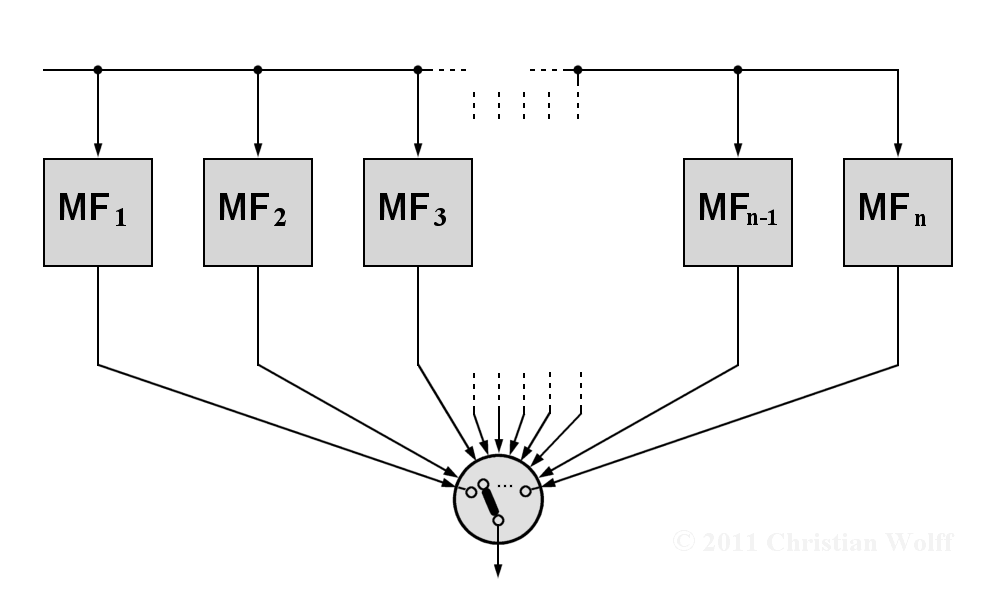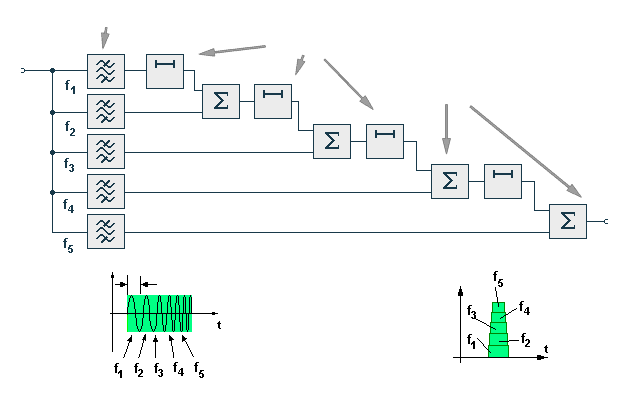Matched Filter

circuit
Figure 1: Parallel circuitry of a number n of matched filters
Matched Filter
In telecommunications, a matched filter is the optimal linear filter for maximizing the signal to noise ratio (SNR)
for a known signal in the presence of additive stochastic noise.
Matched filters are often used in signal detection to correlate a known signal,
or template, with an unknown signal to detect the presence of the template in the unknown signal.

circuit
Figure 1: Parallel circuitry of a number n of matched filters
The problem in radar is, that both the received signal and the template are unknown in practice. Many echo signals are altered by the Doppler effect so much so that they are no longer simply a reflection of the transmitted signal. Here an echo signal can be superimposed on many different Doppler frequencies. For a helicopter recognition, are significant both the Doppler frequency of the rotor blades and the Doppler frequency of the fuselage, ie the radial velocity of the entire helicopter. In practice there must be built a separate matched filter for every possible Doppler frequency spectrum.
The pulse compression circuit is for example radar typical form of a matched filter. It is optimal when the received signal form is identical with the transmitted one. But exactly this identical signals correspond to the echo signal of fixed clutter and their display in most cases is not desirable. If a Doppler frequency is superimposed on the echo signal then the filter is no longer optimally. All frequencies are shifted in a certain direction. Either the highest or the lowest frequency is not included in the signal processing then.
Modern radar sets can compensate this effect. Simplest version is that these both frequencies are not necessary for further signal processing, so that even a target character may be generated when one of these both frequencies is absent. Likewise, solutions would be possible in which the filter will taken into consideration the additional frequency. Improved systems using multiple filters simultaneously (in parallel), each of which is taken into account a particular Doppler frequency. A subsequent “greatest of”- circuit (or software routine) then switches on only the signal which has the best signal to noise ratio. This high number of filters can be best realized digitally. The whole picture shown on the left is often a software solution therefore.
For each of these different Doppler frequency signals applies a different receiver bandwidth to as optimally. The principle of the matched filter is then applied to the entire receiver – one speaks then of a “matched receiver”. It can be used multiple digital receivers in parallel with optimized bandwidth and optimized filter for each Doppler frequency spectrum. For each target only this one receiver output is used, which provides the best signal to noise ratio.

a frequency component
Figure 2: Block diagram of a pulse compression wiring - an example of matched filter

a frequency component
Figure 2: Block diagram of a pulse compression wiring - an example of matched filter

a frequency component
Figure 2: Block diagram of a pulse compression wiring - an example of matched filter
For those who would like to consider the function of a matched filter experimentally: there is an open source simulator for a matched filter with several examples of input signals. There is also the possibility to process own signals.
